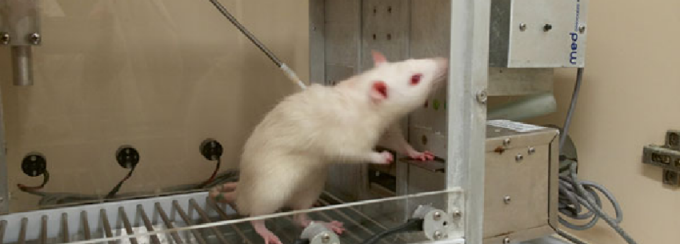
This P50 Research Project (RP1) is conducted by Dr. Paul Meyer, University at Buffalo.
While many individuals are exposed to addictive drugs in their lifetimes, only a small percentage develop the patterns of drug-taking associated with addiction. It is therefore crucial to identify the genetic vulnerability factors that influence the transition from recreational to problematic drug use. Studies investigating the genetic basis of addiction often use rodent self-administration models to induce addiction-like symptoms. However, these paradigms differ in the patterns of drug-taking they produce. For example, in the long access (LgA) paradigm, rats self-administer a drug such as cocaine continuously for 6 hours or longer, and this paradigm produces escalation in drug intake over several sessions in a manner that is characteristic of addiction. In contrast, in the intermittent access (IntA) paradigm, rats’ access to cocaine is restricted such that overall intake is limited, yet leads to “spiking” brain levels of cocaine thought to be characteristic of drug-taking during binges in humans. Despite the lower level of intake relative to LgA, IntA results in larger increases in the motivational value of cocaine, as indicated by increases in the effort expended to acquire the drug, and relapse to drug seeking after periods of abstinence.
The scientific premise of this project is that the behavioral and neurogenetic processes driving drug taking in these models are distinct, and comparing these processes in IntA versus LgA enable the dissociation of genes that promote escalation of intake from those that induced enhanced cocaine motivation. We will conduct a genome-wide association study (GWAS) to determine the genetic variants that influence cocaine intake during IntA, and the degree to which IntA causes incentive sensitization. A unique feature of this project is that we have carefully designed our procedure to parallel an ongoing GWAS (U01DA043799) that is currently conducted by Drs. Olivier George and Abraham Palmer. This allows to use genetic correlations to compare IntA vs. LgA, addressing a unique question: to what extent are the genes that influence the development of addiction-like behavior with LgA similar/different than with IntA? Finally, we will use RNA sequencing to compare how transcriptomic profiles are altered by drug exposure during IntA and LgA, enabling us to determine which gene networks are associated with (1) escalation of intake during LgA vs IntA, (2) incentive sensitization during IntA, and (3) compulsive drug intake during IntA and LgA.
Updated: July 2020
